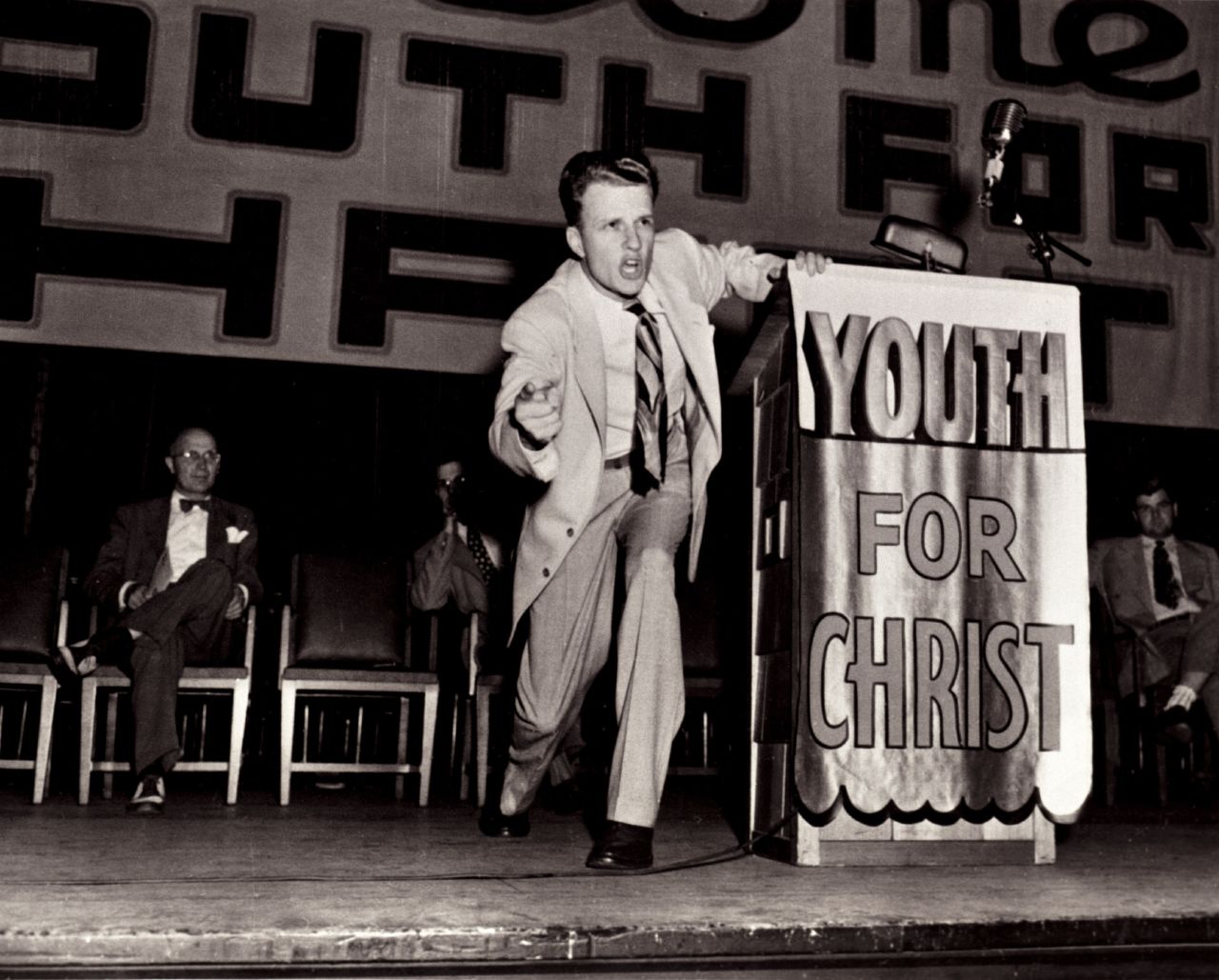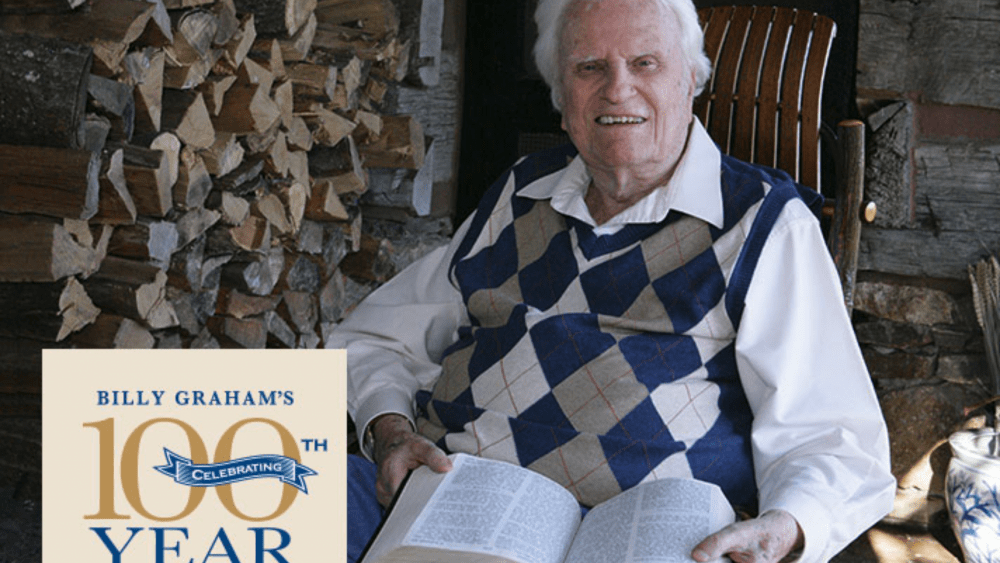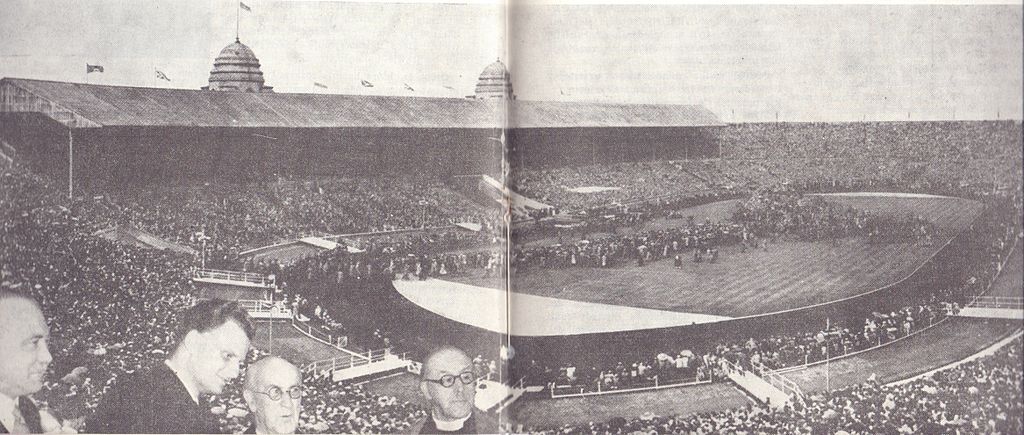For Joyce Wright, listening to American evangelist Billy Graham preach to a massive crowd at the Royal Agricultural Showgrounds in Sydney during the 1968 crusade reminded her of the crowds that followed Jesus during his ministry.
“I can still see it there, see all the crowd, and I thought at the same time [of] when Jesus fed the 500,” says Joyce, who at age 94 can be forgiven for getting the number wrong.
“He preached a good sermon about Jesus and I just thought, ‘well, this is just like Jesus had the … crowds that followed Jesus on several occasions.’”
Her friend, Maisie Muir, had felt the same way ten years earlier during the landmark 1959 Australian and New Zealand crusade, which drew unprecedented crowds during its four-month run, and featured on prime-time television and radio.
“We saw him out at the Showground; there was a big crowd there to greet him … I just felt I was right in the middle of it – it was lovely,” says Maisie.
At 96, Maisie is three years younger than the legendary Billy Graham, who is celebrating his 99th birthday today in his mountaintop home in Montreat, North Carolina, with his favourite cake – a lemon cake with lard icing.
Joyce, Maisie and Nettie Hynan, 89, who are residents of an Anglicare retirement village in Castle Hill, northwest Sydney, all agree that that they found the American preacher very charismatic and handsome, as well as a good communicator.
“He was very attractive and a well-built man,” says Joyce.
“He was very impressive,” agrees Maisie. “Lovely hair.”
“He could just express things and make things easier for you to understand. It was wonderful.” – Maisie Muir
Back in 1959, an estimated 3.6 million people flocked to see Graham at 114 meetings in 106 days in Melbourne, Hobart, Launceston, Auckland, Wellington, Christchurch, Perth, Adelaide, Brisbane and Sydney. The scale of the public’s interest took organisers by surprise, with many changes of venue needed to cope with the crowds. The final event of the Melbourne crusade made history with 143,000 people cramming into the Melbourne Cricket Ground – still the ground’s biggest ever crowd. In Sydney, the final event was staged in two venues side by side – the Sydney Cricket Ground and the Showgrounds – and attracted 150,000 people.
Maisie and Nettie remember being moved to go forward when invited to do so during the altar call, even though they were already Christians. They were among a staggering 146,000 people who went forward to make a commitment to Jesus during the four months of meetings, responding to Graham’s warning that “you may never have another moment like this as long as you live.”

Evangelist Billy Graham speaking at Doak Campbell Stadium in Tallahassee, Florida Florida Memory1 License
“We lived on the south coast and we had a bus and all the people from the church – I was at a Methodist church at that time – every day we went all the way three hours in the bus, three hours back again, and that’s where I heard Billy Graham,” recalls Nettie, who was born in Holland and emigrated to Australia as a young woman.
“We went every day for a whole week. Yes, and then you had to go forward. Before that I already knew about the story. He was a clever man.”
Adds Maisie: “He could just express things and make things easier for you to understand. It was wonderful … I wouldn’t have liked to miss it. It was something you could always remember.”
In 1968, Joyce did not respond to the altar call because she felt it was only for non-Christians.
“We all went in the bus, a bus full of us and I think we were all Christians and none of us went up because we didn’t think that you went up if you were a Christian, you see. But anyhow we enjoyed the talk and everything Billy Graham had to say and we sort of discussed it when we went back in the bus together.”
Joyce says the experience made her a more enthusiastic Christian.
“I just thought ‘there’s a lot of people that aren’t Christians’ and I just wondered why because I was Christian ever since I was born.” – Joyce Wright
“It just added to our knowledge a bit more. Not that we had much knowledge because you don’t really know until you delve into the Bible more where you fail and I think he brought that out in me, you know,” she says.
“Yes, very much more [enthusiastic] because sometimes you forget to say your prayers and whatnot of a night, and especially if you’re tired, and it sort of made me come to that; I say them every night and every morning now.”
The Australia Billy Graham came to was very different from the secular nation we are today. Back then the churches were full, and Sundays schools were huge – up to a thousand or more. But although almost 90 per cent of Australians identified as Christian in the 1950s, many were nominal and lacked a personal faith.
“We came from church and you all dressed up – even when I was little you always had one dress for Sunday school and … Sunday was the day that you dressed up in front of God,” recalled Joyce.
“I don’t think we had hats but we went [to see Billy Graham] in the clothes we wore to church. But they were nice, always your best.”
Joyce remembers being confused by all of the people going forward during the meeting.
“I just thought ‘there’s a lot of people that aren’t Christians’ and I just wondered why because I was Christian ever since I was born, I think. I was christened and we always had to go to church, Sunday school. We had a long way to go – we had to walk three miles in; and I wondered why all these people hadn’t been attached to Sunday school or something.”
When Graham arrived in Australia on February 12, 1959, he was already a household name thanks to hugely successful crusades in Los Angeles (1949), London (1954) and New York (1957). It was the era of the Cold War and the world was divided between East and West. It was the age when nuclear weapons were being developed and there was a fear that the world was about to come to an end.
Into this emotional maelstrom, Graham’s message reassured people that it was not communism they should be worried about; the answers to their problems lay elsewhere.
“Christ doesn’t promise to take your troubles away … but he promises that his grace will be sufficient.” – Billy Graham, 1959
“And this great crowd here today which is possibly the largest crowd we have ever had in any of our services anywhere in the world. This crowd today is due to the spiritual hunger of thousands of people in this state. And I believe that this great demonstration today will be an encouragement to millions of people throughout the world in this age of despair and discouragement in which we live,” he said during the MCG meeting in 1959.
“Now Christ doesn’t promise to take your troubles away. He doesn’t promise to come and take all the difficulties of life away – no, we’re still in this world – but he promises that his grace will be sufficient and his power, he’ll give you a new dimension of life, new strength, a new power, a new dynamic, if you are willing to receive him,” he said in Sydney.

At twenty-seven, Billy resigned his pulpit to go on the road for Youth for Christ. Richard Bromley1 License
The long-term effect of Graham’s preaching in Australia is hard to quantify but far-reaching. Some well-known members of clergy are among those who made a commitment to Christ in 1959, notably former Sydney Anglican Archbishop Peter Jensen and his brother, Phillip Jensen.
“I think what Billy Graham exposed with his great spirit-blessed preaching that day was that I was not actually in a personal relationship with God and I needed to do something about it,” Peter Jensen recalled in an ABC television programme on the 50th anniversary of the 1959 crusade.
Jensen said going forward was a dramatic, concrete expression of coming to faith. “You don’t need to do that to become a Christian. All sorts of people become Christians without doing anything of the sort. But it was his method of actually getting us to make concrete what was going on within. And so, as I saw others go forward, with a step of courage which I didn’t think I had, I too went, stood and went forward. It was as clear-headed a decision as I ever made in my whole life.”
Every female student at Moore College in 1961 had been involved in or converted at a Billy Graham Crusade.
In a recent article, Christian commentator Karl Faase studied what happened to some of those who walked forward at crusade meetings and what difference they made to our nation. He noted that some churches had an enormous number of referrals. St Stephen’s Presbyterian Church on Sydney’s Macquarie Street had a staggering 600 new people referred to them in 1959. The church had to hire an extra minister to deal with the influx. More than 75 per cent of these inquirers stayed as regular members of the church.
More transitory effects were a 10 per cent drop in alcohol consumption in 1960, a slowing of crime rates in 1960-62 and reduced extramarital births in 1960. There was also an immediate boost in theological colleges enrolments. In Moore College in Sydney, for example, numbers peaked at an unprecedented level in 1960 and 1961 and every female student at Moore College in 1961 had been involved in or converted at a Billy Graham Crusade.
Email This Story
Why not send this to a friend?




